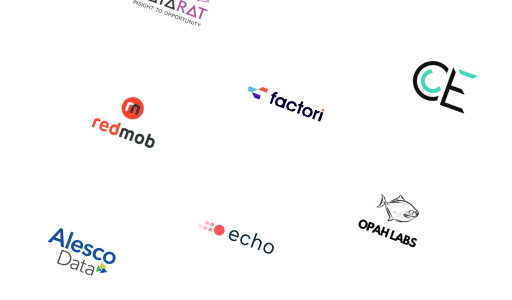Sentiment Data: Best Sentiment Datasets & Databases

- Overview
- Datasets
- Providers
- Use Cases
- Attributes
- FAQ
- Overview
- Datasets
- Providers
- Use Cases
- Attributes
- FAQ
What is Sentiment Data?
Sentiment data refers to information that captures the subjective opinions, attitudes, and emotions expressed by individuals towards a particular topic, product, or event. It is typically collected from various sources such as social media, customer reviews, surveys, and online discussions. Sentiment data is often analyzed using natural language processing techniques to determine the overall sentiment (positive, negative, or neutral) associated with the data, providing valuable insights for businesses and researchers.
Examples of Sentiment Data include social media posts, customer reviews, survey responses, and online comments. Sentiment Data is used to analyze and understand people’s opinions, attitudes, and emotions towards a particular topic, brand, product, or service. It helps businesses gain insights into customer satisfaction, brand perception, market trends, and public sentiment.
Best Sentiment Databases & Datasets
Here is our curated selection of top Sentiment Data sources. We focus on key factors such as data reliability, accuracy, and flexibility to meet diverse use-case requirements. These datasets are provided by trusted providers known for delivering high-quality, up-to-date information.

Consumer Sentiment Data | Global Audience Insights | Psychographic Profiles & Trends | Best Price Guaranteed

Segmentation Data| North America | Detailed Insights on Consumer Attitudes and Behaviours | Consumer Behaviour Data | Consumer Sentiment Data

Consumer Marketing Data | Unique Consumer Sentiment Data: Transcription of the calls to the companies

Demographic Data | Segmentation Data | Retail Data | POI Data and Sentiment Data

Grepsr | Sentiment Analysis of Facebook/Twitter/Instagram posts, News, Product Reviews | Custom and On-demand Sentiment Analysis
Web Scraping News Data | B2B Sentiment Data | Categorized News Events | 19M Blogs, PR Sites and News Sites | 8.3M+ Records

Construction Equipment Manager Sentiment Data

TagX Ecommerce Reviews data | Customer sentiment Analysis | Customer feedback data | Ecommerce data

Malaysia Telecom Data | Network Switching Sentiment Map | Price, Speed, Service, Roaming, Bundles | Switching Likelihood Index, Demographic Breakdowns

Brain Sentiment Indicator / Stock Sentiment using NLP on financial news / 10000+ Global Stocks
Can't find the data you're looking for?
Let data providers come to you by posting your request
Post your request
Top Sentiment Data Providers & Companies
Popular Use Cases for Sentiment Data
Sentiment Data is essential for a wide range of business applications, offering valuable insights and driving opportunities across industries. Below, we have highlighted the most significant use cases for Sentiment Data.
Main Attributes of Sentiment Data
Below, we outline the most popular attributes associated with this type of data—features that data buyers are actively seeking to meet their needs.
| Attribute | Type | Description | Action |
|---|---|---|---|
| String | The name of a company or business, might be the legal or brand name. | View 20 datasets | |
| String | The name of a country. | View 16 datasets | |
| String | The ticker symbol of a stock. | View 15 datasets | |
| String | The name of a brand. | View 11 datasets | |
| String | The industry classification of a company. | View 10 datasets | |
| String | The name of a city. | View 9 datasets |
Frequently Asked Questions
How is the Quality of Sentiment Data Maintained?
The quality of Sentiment Data is ensured through rigorous validation processes, such as cross-referencing with reliable sources, monitoring accuracy rates, and filtering out inconsistencies. High-quality datasets often report match rates, regular updates, and adherence to industry standards.
How Frequently is Sentiment Data Updated?
The update frequency for Sentiment Data varies by provider and dataset. Some datasets are refreshed daily or weekly, while others update less frequently. When evaluating options, ensure you select a dataset with a frequency that suits your specific use case.
Is Sentiment Data Secure?
The security of Sentiment Data is prioritized through compliance with industry standards, including encryption, anonymization, and secure delivery methods like SFTP and APIs. At Datarade, we enforce strict policies, requiring all our providers to adhere to regulations such as GDPR, CCPA, and other relevant data protection standards.
How is Sentiment Data Delivered?
Sentiment Data can be delivered in formats such as CSV, JSON, XML, or via APIs, enabling seamless integration into your systems. Delivery frequencies range from real-time updates to scheduled intervals (daily, weekly, monthly, or on-demand). Choose datasets that align with your preferred delivery method and system compatibility for Sentiment Data.
How Much Does Sentiment Data Cost?
The cost of Sentiment Data depends on factors like the datasets size, scope, update frequency, and customization level. Pricing models may include one-off purchases, monthly or yearly subscriptions, or usage-based fees. Many providers offer free samples, allowing you to evaluate the suitability of Sentiment Data for your needs.
What Are Similar Data Types to Sentiment Data?
Sentiment Data is similar to other data types, such as Semantic Website Data, Social Media Data, IP Address Data, Web Scraping Data, and Web Traffic Data. These related categories are often used together for applications like Sentiment Analysis.







